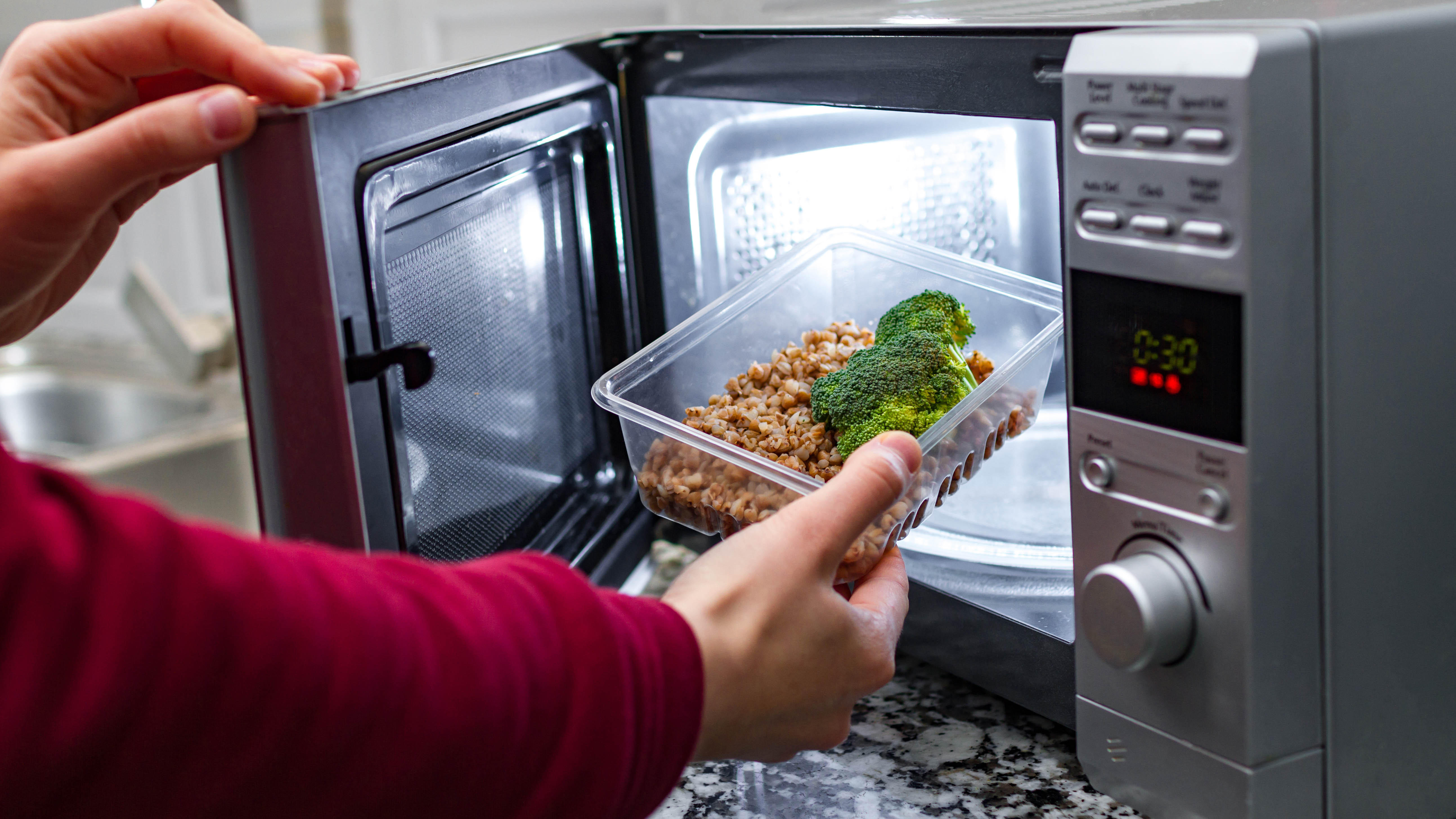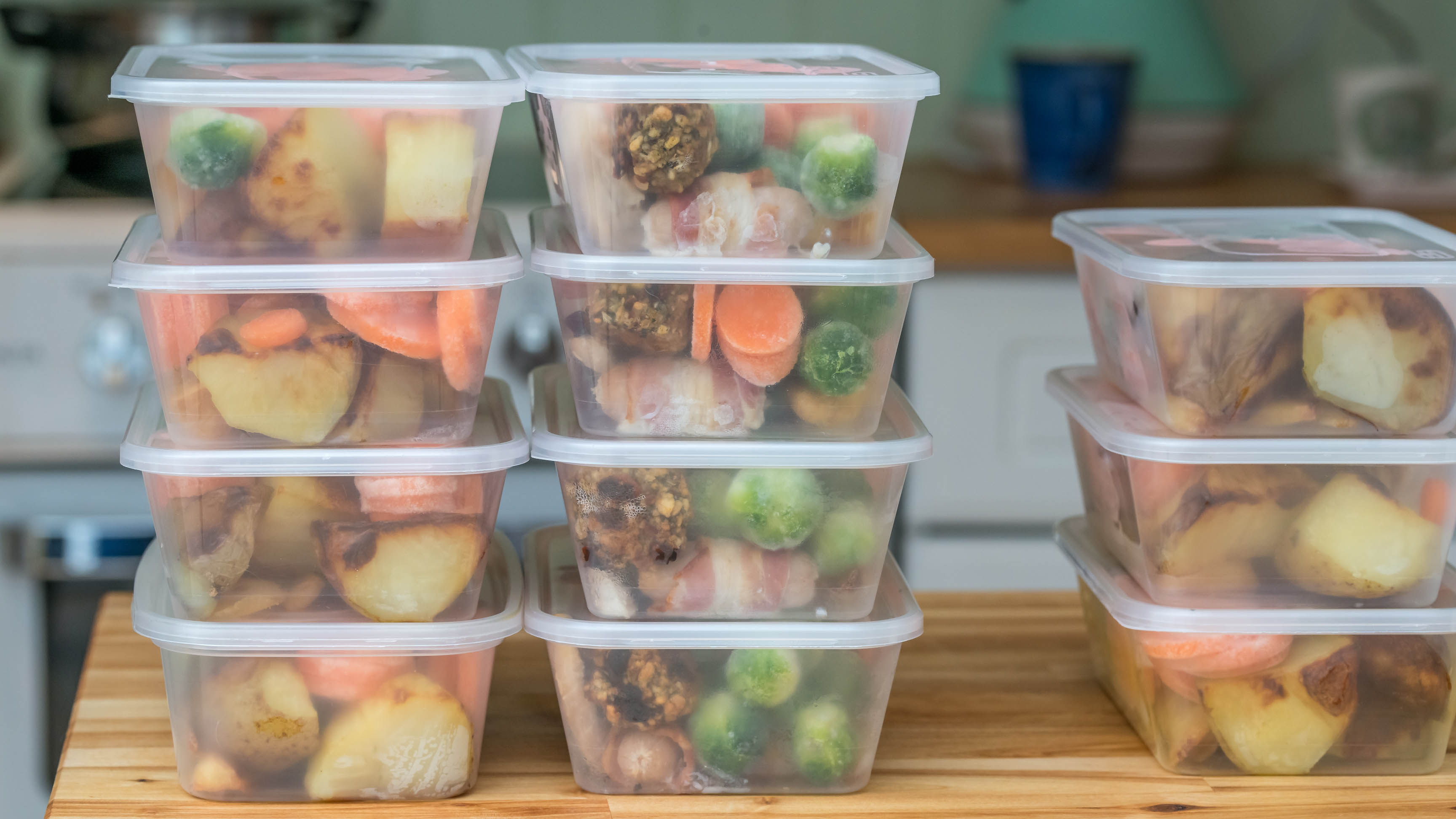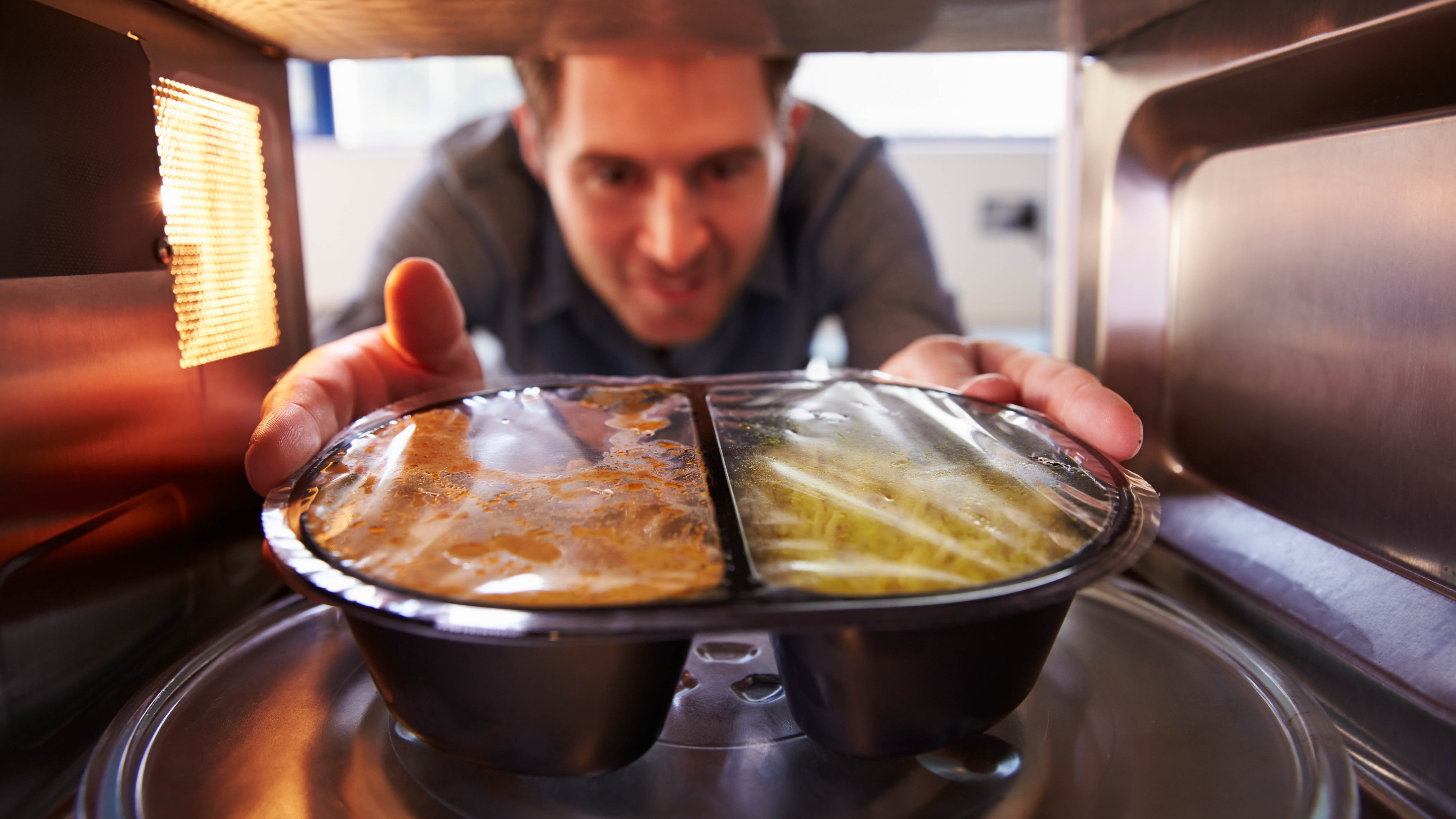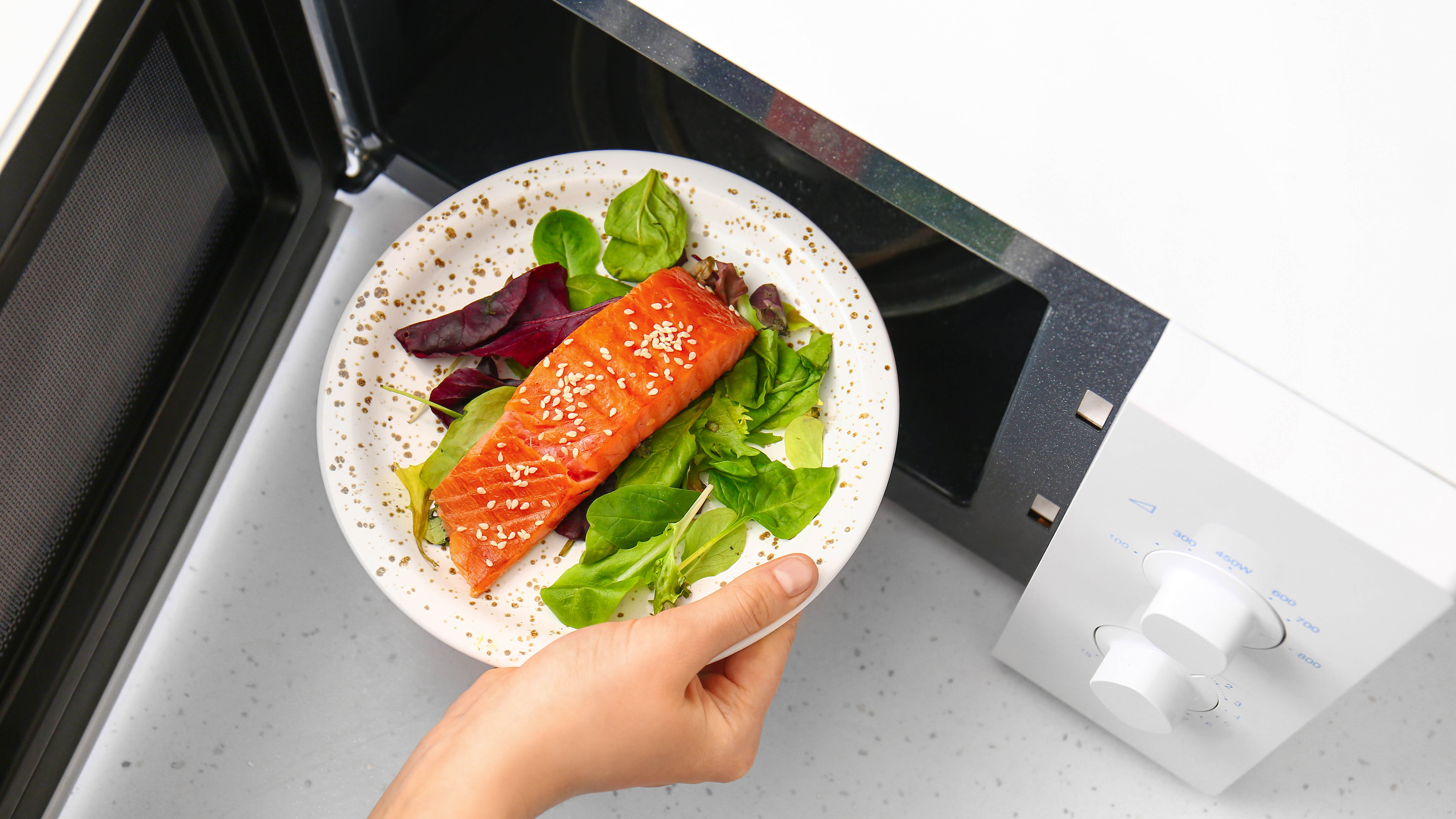Can plastic go in the microwave? Here’s what the experts say
Is plastic safe to microwave? Here’s what you need to know

After a long day of work, the easiest thing to do is just throw your leftovers in whatever container you have in the microwave and relax. But heating that leftover plastic box or jar in your kitchen’s favorite device can potentially cause serious problems to both the food and your health. Though some plastics are designated as microwave-safe, others can burn, melt or leach dangerous materials into what you’ve been consuming, which is never a good thing.
A microwave works by using a high-powered vacuum tube, known as a magnetron, to produce waves of microwave energy that bounce off the metal walls. These waves vibrate the water inside the food, causing energy and heat to be released. While that vibration won’t degrade your chicken breast, experts believe that the same activity can cause certain types of plastic to degrade and leave microscopic shards of nanoplastics behind.
Is plastic safe to microwave?

Plastic that isn’t designated as microwave-safe shouldn’t be used to reheat food. Microplastics, chemicals, and a whole slew of other deadly problems can stem from just a few seconds of reheating in a plastic take-out container. Non-safe plastic containers shouldn’t just be avoided in the microwave, they shouldn’t be placed in the oven or any other heating contraption with food inside.
According to a study in Environmental Science and Technology, microwave food had the “highest release of microplastics and nanoplastics” compared to food left in the fridge or out at room temperature. Some plastic containers released upwards of 2.11 billion nanoplastics from only three minutes of microwave heat in one square centimeter of plastic area. The study also found that “polyethylene-based food pouch released more particles than polypropylene-based plastic containers.”
Though there hasn’t been much of a consensus among experts, nanoplastics can potentially lead to physical damage or they can create an environment habitable for microorganisms that can create intestinal issues. It’s hard to avoid ingesting any microplastics these days since they have infested a lot of our daily life because aquatic organisms, like microscopic plankton, eat them and then we ingest them in our water or food. But, if we can avoid eating a few extra billion microplastics, it's probably worth avoiding.
Outside of these shards, plastic can also leach out chemicals that have been added to help your container keep its shape and form. These chemicals are mainly found in food storage containers and drinking glasses, though they can pop up in any consumer-grade plastic. The main cause for concern is bisphenol A (BPA) and a group of chemicals called phthalates, which can lead to severe health problems like diabetes and reproductive harm, according to the National Library of Medicine.
Some plastics are required by the FDA to be BPA-free, like baby food bottles and infant formula packaging, while others just choose to omit the chemical. It’s not guaranteed that your plastic container will leak out in the microwave, but there is a much higher chance that’s not worth the risk.
Sign up to get the BEST of Tom's Guide direct to your inbox.
Get instant access to breaking news, the hottest reviews, great deals and helpful tips.
What plastics are microwave safe?

To avoid these issues, it’s always best to use glass, ceramic or plastics that have been designated as microwave-safe. Microwave-safe plastics need to be able to handle 250 degrees Fahrenheit without decomposing or falling apart.
Resin codes are the numbers at the bottom of a plastic container ranging from one to seven and will tell you what can be put in the microwave. Plastics number 2, or High-Density Polyethylene (HDPE), and plastics number 5, Polypropylene (PP) are usually safe to put in the microwave. Plastic one, (Polyethylene Terephthalate), three (Polyvinyl Chloride), four (Low-Density Polyethylene), six (Polystyrene), and seven (random extra types of plastic) are all not safe for a microwave.
Putting styrofoam, or styrene, in the microwave, which usually falls under number six, is rarely a good idea unless the packaging says otherwise. When heated, styrene can leach a carcinogen into your food or even catch on fire if heated for too long. According to the Centers for Disease Prevention and Control (CDC), taking in styrene can lead to hearing loss and “nervous system effects such as changes in color vision, tiredness, feeling drunk, slowed reaction time, concentration, problems, or balance problems.” If you are wondering if the container you have is safe, it will usually say on the bottom of your container whether it can be used or not.
“Only use cookware that is specially manufactured for use in the microwave oven,” the United States Department of Agriculture (USDA) writes on its website. “Glass, ceramic containers, and all plastics that are safe to use usually will be labeled for microwave oven use.” Heavy plastic wrap (labeled microwave-safe) can be used on microwaved food, though the food shouldn’t touch the plastic and a heat vent should be made to help it escape.
The damage plastic can cause also depends on what the container is being used for. For example, soup containers you get from your local take out spot are most likely a bit more heat resistant than the same flimsy plastic built to hold a burger and fries.
How can you make sure you are safe?

If you want to be on the safe side, there are signs a container will tell you when it should not be used in the microwave. Plastic not meant for the microwave will start to deform and melt when placed in extreme heat. Using glass or ceramic containers is a fantastic way to make sure you aren’t getting any of these nasty chemicals or microplastics in your food.
So can you put plastics into the microwave? The short answer is, it depends on the type of plastic and how hot you need the food. But for most takeout containers or plastic bottles you’ve got lying around, the answer is a resounding no, and you should just take out a paper or ceramic plate to get the heat you need.
Going the lazier option might seem like a good idea in the short run, but science has shown us that using ceramic or glass to microwave your food is a much safer option. These containers with snap-on lids are purchasable at most home stores, offering a wide array of sizes and shapes to store your food. These containers are also reusable and can be placed in the dishwasher without fear of them falling apart or deforming. The same can’t be said for the plastic containers that shouldn’t be placed in the microwave.
More from Tom's Guide
Steven Asarch is a writer and editor who lives on Twitch and YouTube. After graduating from Baruch College, he wrote for IBT Media, Newsweek and Insider. In 2021, he executive produced the docu-series "Onision in Real Life" on Discovery +. As someone always looking to have the best smelling apartment possible, he's made it his mission to find the best air purifiers out there. His home has since become an air purifier haven, having stored and tested ten models for over three months. You could say he now knows everything there is to know about air purifiers, and what separates the good from the best.

